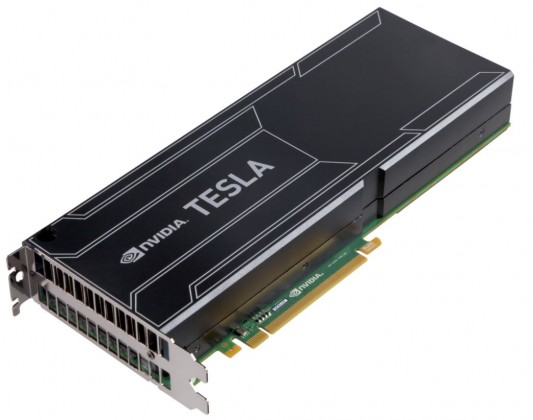First Kepler-generation GPU reaches out to two markets with big data sets and budgets to match.
Nvidia today released the first Tesla graphics processing unit (GPU) based on the new Kepler technology announced yesterday. The Nvidia Tesla K10 GPU Accelerator is being targeted for two industries with big data sets and the budgets to match, oil and gas exploration and defense industry image and signal processing.

Kepler architecture enables two high-performance Tesla K10 GPUs to be placed on a single accelerator board. Nvidia says it can deliver an aggregate performance of 4.58 teraflops of single-precision floating point and 320 gigabytes per second memory bandwidth.
Seismic processing
Seismic processing uses large data centers to crunch through petabytes of information about the Earth’s subsurface area, generated from reflected seismic waves. Geophysicists analyze the resulting 2D and 3D images to discover oil and gas deposits, and to determine the best and safest locations to drill. GPUs improve the accuracy of seismic processing by enabling the use of more detailed, computationally intensive seismic processing software algorithms.
Leading seismic processing companies—including Schlumberger, CGGVeritas, and TGS—and oil and gas companies—such as Chevron, Petrobras, Total, ENI, Repsol and Saudi Aramco—are using GPUs to increase their success rate in the identification of new reserves. By generating higher-quality images in a more affordable and timely fashion, GPUs give these companies a much greater degree of accuracy and confidence in drilling decisions.
“The Tesla K10 is simply amazing,” said Paulo Souza, developer in the Geophysical Technology Group at Petrobras RTM. “My seismic application is 1.8x faster on the K10, compared with the Tesla M2090 GPU within the same power envelope. This transformational technology will dramatically accelerate our ability to find and safely reach new oil and gas reserves, as 90% of our computational power comes from the GPUs.”
Defense signal and image processing
GPUs help national security agencies by improving the quality, and speeding the delivery of, actionable video analytics and image forensics to security and law-enforcement officials. GPUs speed up by as much as 100x the process of analyzing thousands of video feeds generated by security cameras and drones, enabling analysts to better identify events and individuals of interest.
“The massive amount of video data being generated from security cameras and UAVs presents a ‘new big data’ problem for the defense industry,” said Yiannis Antoniades, director of ISR Technology at BAE Systems. “We now have broad access to robust, high-quality video, but often we cannot analyze it quickly enough to generate actionable intelligence. GPUs are being used to accelerate nearly every aspect of video analytics, from video stabilization to ortho-rectification, enabling us to provide real, valuable data to the field quicker than ever before.”
The new NVIDIA Tesla K10 GPU Computing Accelerator is available beginning this month from several OEMs including Appro Supercomputer Solutions, Dell, HP, IBM, SGI and Supermicro, as well as through NVIDIA distribution partners.





